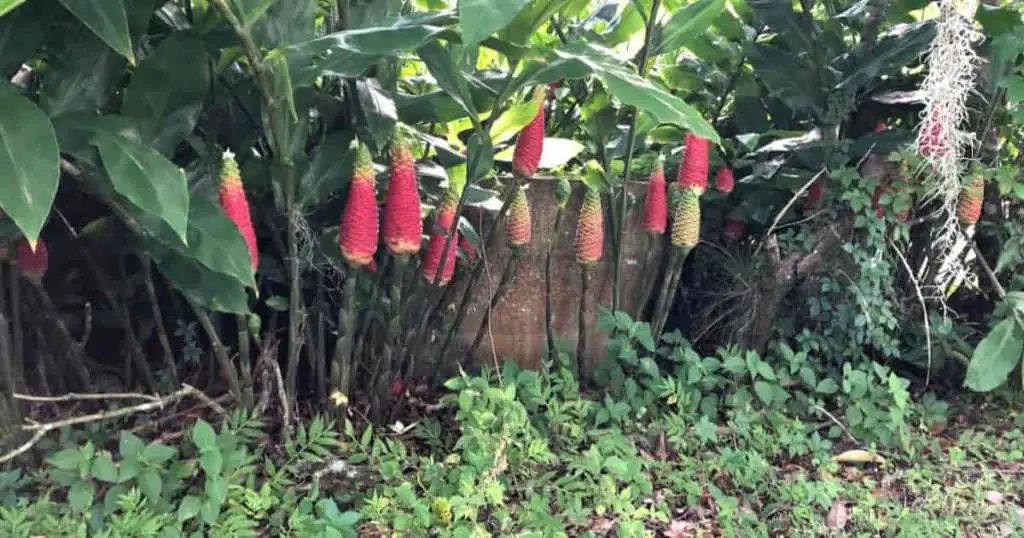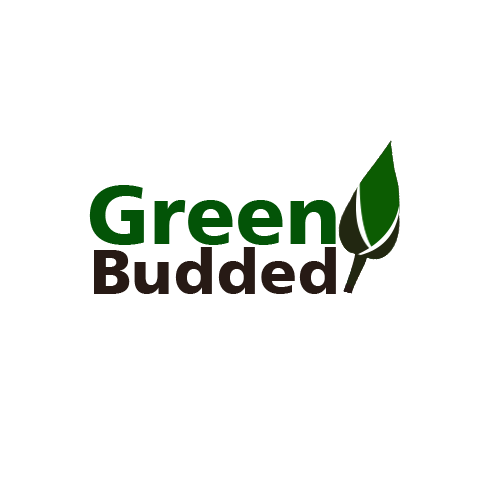Helpful Guides on each Category

The shampoo ginger lily plant (Zingiber zerumbet) is more familiar to people who have been to Hawaii although, it originated in India.
It is also called Shampoo lily, Awapuhi Kuahuwi, bitter ginger or red pine cone ginger. This is because it has a conical-shaped flower head that produces a fluid scent like Ginger. This fluid is a crucial ingredient in shampoos and hair conditioners.
For importance, aside from hair products, the shampoo ginger lily has medicinal uses. Its roots carry that power. This root also produces fragrance when dried. What gives it the name bitter ginger is that it can also be used exactly for the same purpose (spicing, flavouring, medicine) as regular ginger but it’s more bitter. Its leaves are also used for flavouring.
The good thing about shampoo ginger lily is that it can be grown in your house or outside in the garden, so you can benefit from its aesthetic effect either way.
This Shampoo Ginger Lily plant guide will give you every information you need to grow and maintain your plant.
What is a Shampoo Ginger Lily Plant (Zingiber Zerumbet)

Red pine cone ginger as it is also called belongs to the Zingiberaceae ginger plant family. This family include popular spices like Tumeric (Zingiber officinale) and Ginger (Curcuma longa).
The applications of this plant that makes it popular are spice, shampoo and conditioner production uses. Shampoo lily is a wild tropical kind of ginger.
Its growing season is from spring towards the end of summer during which it blooms bright red flowers about 4 inches long that produce a ginger scent. This plant grows up to 6.4 feet tall.
The Awapuhi or pinecone ginger or shampoo lily earns its name from its pinecone-shaped flower head. These pinecone heads are green at first enveloped by green pasty bracts where white flowers pop out as they grow. Bracts of this plant produce pasty fluid used to make hair products when the plant is old enough.
Roots of the Awapuhi Kuahuwi although more bitter than the popular ginger are also food-flavouring spices. The leaves of this plant are variegated in that it has a white leaf and a green leaf variety.
Uses and Benefits of Shampoo Ginger Lily (Awapuhi Kuahuwi)
- It produces aromatic liquid used in making Hair products.
- Rhizomes or underground roots of this plant are used medicinally in the treatment of mouth aches, migraines and wounds amongst others.
- This plant has an anti-oxidizing effect.
- The juice is used as an appetizer.
- For consumption, the rhizomes are eaten and used as a spice, and the bitter ginger’s flower buds are used as vegetables.
Quick Red Pine Cone Ginger Care Summary
| Scientific Name | Zingiber zerumbet |
| Common Names | Awapuhi Kuahiwi, shampoo ginger, bitter ginger, pinecone ginger, shampoo lily, wild ginger. |
| Family | Zingiberaceae Family |
| Origin | Asia |
| Growth Rate | Medium to Invasive |
| Size | 3 – 6 feet high. |
| Bloom Time | Summer to the end of fall |
| Lighting | Diffused to bright light is okay |
| Soil Type | Moist Nutrient-rich well-drained soil. 6 – 6.5 pH. |
| Temperature | 55 – 75 degrees Fahrenheit (20 – 25 degree Celsius) |
| Fertilizer | Well-balanced fertilizer (slightly with more phosphorous to enhance blooming) or manure. |
| Toxicity | Non-toxic even to pets |
| Plant Combination | Lemon grass, Tumeric, canna, Calla Lillies |
| Pests (and diseases) | Aphids, mites, mealy bugs. (Disease- Root rot). |
Growing Shampoo Ginger Lily Plant – Steps

Shampoo Ginger thrives well in warm and moist conditions and is less active during the winter period. When spring comes, inactive rhizomes (underground roots like that of ginger) begin to produce shoots which emerge from the soil.
They enjoy the full sun with little shade. To grow them properly, do not plant them in areas that receive direct sunlight for close to 6 hours. Moist, well-aerated soil is better for them with organic manure or fertilizer slightly higher in phosphorous.
Outdoor Planting
Bitter ginger plants do better in plant hardiness zones 8 to 12. Shampoo lily plants mature about 5 to 10 months after planting.
Bitter ginger does better with diffused, bright light for up to six hours daily, it can also grow under shades.
When planting, leave a space of 20 to 40 inches in between the Shampoo ginger lily plants. Observe soil humidity especially if you are planting in sunny areas.
Awapuhi Kuahuwi Watering
Keep shampoo ginger lily plants in moist soil during their growing season (between spring to early fall. During the snow season, rather keep the plant dry.
In general, water your plants at least once a week. Pour the water directly into the soil, not on the plant’s leaves to prevent fungal diseases.
Rainwater or if possible distilled water is preferred to tap water when watering to avoid salt accumulation at the base
When planting, especially indoors, plant the bitter ginger in perforated containers.
Lighting and Sunlight
Awapuhi Kuahiwi grows better under shade. Although, 4 – 6 hours of bright and diffused light should be given to them.
If growing indoors, you place them where they can receive a decent amount of sunlight.
If growing outdoors in the garden, plant them in shaded parts where diffused but bright sunlight for at least half of the day time can touch them.
Temperature and Humidity
These pinecone lilies are tropical plants meaning they grow in warm and moist areas, they can also tolerate colder areas better than most other tropical plants. For Indoor planting, room temperature is okay for Shampoo ginger lily plants.
Try to keep Awapuhi Kuahuwi planting temperatures between 55 to 75 degrees Fahrenheit.
If planting in warmer areas, mulching during the winter is necessary to protect plant roots from frost. When the growing season is past, can dig up the rhizomes and preserve them till the next planting season.
A humidity of 40% to 55% is okay for this tropical plant.
If growing indoors where moisture is difficult to maintain, encourage more moisture by
- Making use of a humidifier
- Keeping your plants on top of a flat container tray filled with water.
- Place your plant in normally moist places like the bathroom or kitchen but in areas where light can pass.
Ziniger Zerumbet Soil needs
Nutrient-rich soil of pH between 6 – 6.5 is very much appreciated by the Pinecone ginger.
As stressed earlier, grow your shampoo ginger lily plant in a perforated container to avoid soil waterlogging. Waterlogging eventually causes root rot disease.
Fertilizer Application
Apply fertilizer to this plant only in the bloom season. Phosphorus-rich fertilizer is preferred to allow for healthy rhizome growth or bloom.
In fact, we preach organic farming, so apply compost manure twice a week in the growing season of your shampoo ginger plant for better care.
Pruning and Maintenance of Awapuhi Kuahuwi
They are perennials that have medium to invasive growth rates. Invasive during summertime.
By nature, they are not very invasive plants but will overgrow other plants if planted in a very small space.
Propagating Shampoo Ginger Lily Plant From the Rhizome – Steps

This bitter ginger lily plant (Zingiber zerumbet) can be propagated with seeds although these seeds are not easy to see. Shampoo ginger rhizomes propagation is the most used method of propagating this plant.
Below are listed steps to grow this plant from rhizome;
- Get yourself ready by keeping tools and equipment like gloves, and trowel ready.
- With your trowel, dig the soil to show the rhizomes (gingerlike roots).
- Cut off a sizeable rhizome that contains some buds.
- Leave for some days for the cut to dry.
- Before planting, soak the rhizomes in water overnight.
- Put manure and earth in the container and bury the roots making the buds face up.
- Water the plant regularly adding manure or fertilizer till the rhizomes shoot.
How to Grow Shampoo Ginger Plant From Seeds
Growing Shampoo Ginger plant from seed is quite rare. If you’re able to get your hands on shampoo ginger plant seeds from an authentic merchant like Neverland, follow these steps to get your shampoo plant going:
- Soak seeds in water till they look swollen
- Put seeds in a container. If planting many seeds together, give a spacing of at least 2 inches.
- Keep seedlings in a moist and warm place till germination.
- After shooting sprouts, give about 2 months before transplanting.
Read a more in-depth guide on this here: Seeds of Shampoo Ginger Lily: Uses and Benefits
Shampoo Ginger Lily Plant (Ziniger Zerumbet) Pests and Diseases
Root or rhizome rot is the most complained about problem of shampoo ginger lily plants. They are also attacked by pests such as Mealybugs, Root grubs, Aphids and mites. Below, we’ll discuss how to treat these conditions.
Pests
Root Grub
Root grub attack the rhizomes of the Shampoo Ginger plant.
The symptoms are seen after the root has been badly attacked. The stems and leaves start to turn yellow and wither. Treat with an insecticide once spotted early.
Mealybugs
Mealybugs leave a white substance on a plant’s leaves looking like cotton.
They multiply rapidly and when fully blown can kill the plant. Isolate affected plants for treatment to prevent spread to other crops.
To treat affected plants, wash them down with diluted alcohol (3:1 ratio of water to alcohol) till pests disappear.
Diseases
Root Rot or Rhizome Rot/Soft Rot
Root rot is a general problem for many plants like the Shampoo Ginger Lily. It’s usually caused by moist or waterlogged soil for prolonged periods of time.
Symptoms can include rapidly yellowing leaves, stunted growth, and a rotten brown base. Yellow leaves are the most common sign in Shampoo ginger plants of a rhizome rot issue.
If you’re seeing these symptoms, here’s how to treat root rot.
- Carefully remove the soil till the rhizomes are visible.
- Brown and retarded rhizomes call for quick action.
- Cut out unhealthy or affected parts of the roots. If a greater part of the rhizome has been destroyed, get yourself new roots for planting.
- Treat rhizomes and soil with fungicide.
- After treating the plant, restore it back to its cleaned-up container and refill it with new soil




